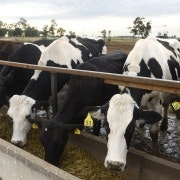Centro's shopping complex creation
Finally, the extraordinarily complex proposal to reconstruct and recapitalise the Centro property group has been unveiled. That the disparate members of the incestuous structure have been able to agree a proposal is a triumph for mutuality of interest, and mutually assured destruction if they didn't.
Inevitably, given the nature of the group, with its tangle of co-ownership interests in the assets, cross-shareholding in its various funds and direct and indirect external investors in those funds, rationalising the group structure to produce something simpler and more conventional isn't a straightforward exercise and will involve convincing a raft of different interest groups to support the proposal.
As with the boards of the various entities within the Centro structure, however, those interest groups, when they vote on the reconstruction, will face a choice between modest value or something even less palatable.
The general architecture of the scheme is straightforward even if the detail is complex.
The foundations for it were laid in March when Centro Properties, the headstock, and some of its funds sold their US assets and business for $US9.4 billion. That enabled CNP to strike a deal with its lenders under which they exchanged their debts for essentially all CNP's assets and operations.
The lenders also agreed to create a pool of $100 million which will be distributed among CNP's security holders, the holders of it hybrids and convertible bonds and its class action litigants if they support the scheme. The security holders are being offered 5 cents per security.
The leverage CNP has to convince those groups that they should vote in favour of the scheme is that, with $3.1 billion of debt maturing in December and a $1.6 billion deficiency in net assets, the alternative is some form of administration that would leave them with nothing. About 83 per cent of CNP's lenders (which also own about 49 per cent of its hybrid securities) are supporting the proposal.
The scheme involves those lenders swapping their debt for an interest of about 68 per cent in a new A-REIT which would include CNP's assets and businesses and into which would be tipped the assets of Centro Retail, the Centro Australia Wholesale Fund and the Direct Property Fund to create a new vehicle with a $4.4 billion portfolio of Australia retail centres.
The new A-REIT would have total assets of more than $5 billion and net assets of about $3.3 billion, with gearing in the low 40 per cent range and an initial yield of about six per cent.
CER security holders will no doubt wonder why their position – CER has positive net assets of close to $1 billion – hasn't been exploited to deliver something better than 15 per cent of the new entity.
The philosophy that has under-pinned the negotiations between the various entities, however, is that every transaction should, where possible, be conducted at net asset values. Given the extent of co-ownership of assets between the various entities, that was the only viable approach – the same asset couldn't be valued differently for different parties.
With CER majority-owned by CNP, reliant on it for its management and services and co-owning various properties with it, CER's independent directors would have been very conscious of the damage and uncertainty that would be created for their security holders if CNP were placed in administration. CER's non-CNP security holders' 15 per cent interest in the new vehicle will represent about $500 million of value, which equates to their share of CER's net assets.
While there will inevitably be some of the interested parties that quibble with the detail of the scheme and the value they will gain from it, and which may try to exploit the need for a multiplicity of security holder approvals to try extract something more, the spectre of a CNP administration should provide some discipline around the process.
For the CNP lenders, CER security holders and the external investors in the DPF (who will end up with 17 per cent of the new entity) the creation of the new entity isn't just about simplifying the structure.
From the moment the financial crisis emerged – for the past three years – the entire Centro group has been paralysed and traumatised. While its retail centres have continued to operate and, indeed, have traded extremely well, there wasn't any spare capital to spend on them.
That's why the group's chief executive, Robert Tsenin, said there were more than $500 million of development opportunities for the new entity over the next four years – there is an ability to add significant value to the new entity if the stakeholders vote for its creation.
While the internal structure of the proposed new entity would be complicated – CER, CAWF and DPF would be stapled together inside the entity while CNP's assets would be acquired by issuing securities – externally it would look like any other A-REIT, with its own internal management managing the second-largest portfolio of retail centres in the country.
Despite the more than 600 pages of information released today there is a lot more information to flow before security holders and others get to vote on the proposal, including an explanatory memorandum that will itself include an independent expert's report.
It is possible, maybe even probable, that some of the opportunistic investors that have taken up strategic positions on the CNP and CER registers might threaten to vote against the proposal in an attempt to prise something more from the process.
By the time the explanatory memorandum has been issued and digested, however, a more definitive and detailed insight into the consequences of voting for or against the scheme will be available.
Given the Centro group's circumstances and the December deadline for repayment of CNP's debts, however, the perception that the broad choice is between something or potentially nothing is unlikely to change much.















